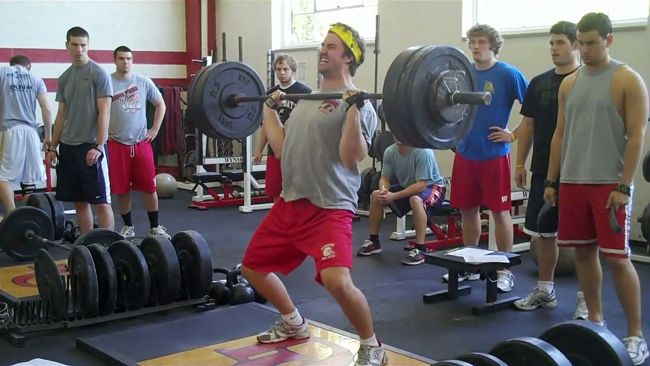
(This is part three in a four-part series)
ATTENTION TO DETAIL
As a strength coach, we are sometimes measured by subjective factors. There is no win or loss record next to your name. It's difficult to place blame for failure solely on the strength coach or give credit for success solely to the strength coach. There are so many other determining causes that go into winning and losing. The number one factor for success for every athlete is their ability to play their particular sport. I'm in no way undermining the role of the strength coach in an athletic team’s success. Our role as strength coaches has been minimized for years. It's important that we're as objective as possible. This is the one attribute that separates strength & conditioning coaches from all other sport coaches or athletic trainers. Our entire existence is based on eliminating subjectivity in our evaluation, performance testing and day-to-day operation. Reducing the subjectivity in your program can assist in reducing the rate of acute or cumulative injuries in your program.
Exercise Technique
Coaching every repetition of every set of every exercise every athlete does can be daunting, depending on scheduling and staffing. It is, however, what separates good strength coaches from weight room monitors. There's a fine balance between coaching every detail and over-coaching.
Ensure all coaches, interns and athletes are using the same terminology and buzz words. These will eliminate any confusion when coaching athletes. Make sure your coaches know what to look for and, more importantly, how and when they should get their coaching points across. Coaching an athlete before an exercise, after the exercise, between sets, between reps and during a rep all demand a different demeanor when coaching. Set a good example to your coaches, interns and athletes. Understand what “hat” you and your coaches need to wear at the correct times. Know when you need to be a motivator, lifting partner, mentor and clinician.
Load Parameters
A sure-fire way to have an athlete injure himself in the weight room is having that athlete use weights they're not prepared to do, for whatever reason. This could be due to the training age, time of year, exercise order, ego, etc. Basically, the weight is too heavy for the athlete on that particular day.
No matter what system you incorporate in your program, there must be a progressive overload. This doesn’t necessarily mean adding more weight (the variable most of us emphasize), but via increasing reps, sets, reducing rest intervals, etc. A coach must account for daily and weekly fluctuations in training maxes and CNS fatigue. Training an athlete in a fatigued state can increase the chance of injury. This fatigue can be muscular fatigue from practice or the CNS from the stresses of being a college or high school student. These factors must weigh into your decision to adjust volume, replace exercises and, most importantly, adjust the training load.
This is why a coach must re-calculate and adjust percentage of maxes or working rep maxes as often as possible. If this isn't a possibility, then you must ask if your athletes can adjust the intensity either during or between training sessions. Another option would be to give the athlete a “rep-range” and allow the athlete to perform less or more reps depending on their strength level for that day. Also, using warm-up sets as a gauge of how the athlete should proceed with his/her work sets can assist a coach in setting athletes up for success.









